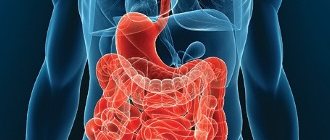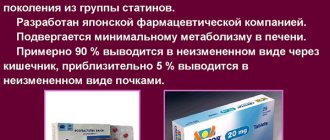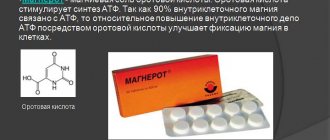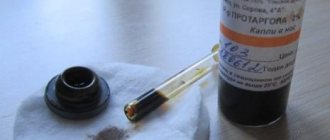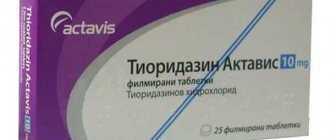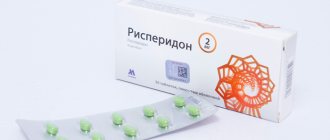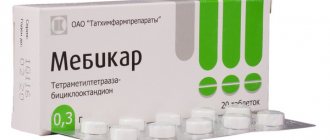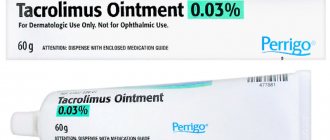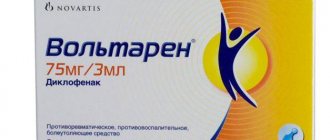Prohibited during pregnancy
Prohibited during breastfeeding
Prohibited for children
Has restrictions for older people
Has limitations for liver problems
Prohibited for kidney problems
Valz (INN - Valsartan) is a peripheral vasodilator, belongs to angiotensin 2 receptor antagonists. Dosage form - film-coated tablets with different dosages of the active substance - 40, 80 and 160 mg. The composition includes the active component – valsartan.
The drug lowers blood pressure by blocking angiotensin 2 receptors. The onset of action becomes noticeable only 2 hours after administration, and the maximum effect occurs after 4-6 hours, but the effect lasts almost the whole day. Excreted in urine and bile.
Indications for use of Valza
They are used primarily for hypertension, as well as after myocardial infarction with complications of the left ventricle to improve recovery processes, and as complex therapy for CHF. It has many substitutes, both Russian and foreign. It is the Valz analogues that we will consider in detail in this article.
Release form
According to the instructions, Valz is produced in the form of oval, biconvex, film-coated yellow tablets with the inscription “V” on one side, side marks and a score on the other side, 40 mg and 160 mg and pink tablets with the inscription “V” on one side , side notches and notches on the other side, 80 mg each in blister packs. One Valza tablet contains:
- Valsartan – 40 mg (80 mg or 160 mg);
- Lactose monohydrate – 21.11 mg (42.22 mg or 84.44 mg);
- Povidone K29-32 – 3.6 mg (7.2 mg or 14.4 mg);
- Microcrystalline cellulose – 18 mg (36 mg or 72 mg);
- Croscarmellose sodium – 5.4 mg (10.8 mg or 21.6 mg);
- Talc – 0.9 mg (1.8 mg or 3.6 mg);
- Magnesium stearate – 0.63 mg (1.26 mg or 2.52 mg);
- Colloidal silicon dioxide – 0.36 mg (0.72 mg or 1.44 mg).
The film coating of Valz tablets contains opadry II 85G32407 yellow - 3.6 mg, 7.2 mg or 14.4 mg, as well as:
- Polyvinyl alcohol - 1.584 mg (3.168 mg or 6.336 mg);
- Macrogol-3350 – 0.444 mg (0.889 mg or 1.778 mg);
- Talc – 0.72 mg (1.44 mg or 2.88 mg);
- Yellow iron oxide dye – 0.128 mg (for 40 mg yellow tablets);
- Yellow iron oxide dye – 0.029 mg and red iron oxide dye – 0.049 mg (for 80 mg pink tablets);
- Yellow iron oxide dye – 0.910 mg and red iron oxide dye – 0.016 mg (for 160 mg yellow tablets);
- Titanium dioxide – 0.598 mg (1.373 mg or 1.976 mg);
- Lecithin – 0.126 mg (0.252 mg or 0.504 mg).
Drug interactions
It is possible to enhance the antihypertensive effect when using Valz N with other antihypertensive drugs (including vasodilators, beta-blockers).
Valz N enhances the neurotoxicity of salicylates, the side effects of cardiac glycosides, the cardiotoxic and neurotoxic effects of lithium preparations, and the effectiveness of curare-like muscle relaxants.
Valz N reduces the excretion of quinidine, weakens the effect of oral hypoglycemic agents, norepinephrine, epinephrine and anti-gout drugs.
The drug increases the frequency of allergic reactions to allopurinol; reduces the excretion of cytotoxic drugs by the kidneys (cyclophosphamide, methotrexate) and leads to an increase in their myelosuppressive effect.
Medicines that intensively bind to blood proteins (indirect anticoagulants, clofibrate, NSAIDs) enhance the diuretic effect.
The hypotensive effect is enhanced by barbiturates, phenothiazines, tricyclic antidepressants, and ethanol.
When taking methyldopa simultaneously, hemolysis may develop.
Cholestyramine reduces drug absorption.
The risk of developing hypokalemia increases with simultaneous administration of saluretics, corticosteroids, ACTH, amphotericin B, carbenoxolone, penicillin G and salicylic acid derivatives.
An increase in the bioavailability of the thiazide diuretic is observed with the simultaneous administration of m-anticholinergic drugs (for example, atropine, biperiden), which is apparently associated with a decrease in motor activity of the gastrointestinal tract and a slowdown in gastric emptying.
When thiazide diuretics are used together with vitamin D or calcium salts, it is possible to increase the concentration of calcium in the blood serum.
The simultaneous administration of cyclosporine can lead to an increase in the concentration of uric acid in the blood, which increases the risk of developing hyperuricemia, and can also provoke an attack of gout.
Valza's analogues
Valz's analogues for the active substance are:
- Diovan;
- Valsafors;
- Tantordio;
- Valsartan Zentiva;
- Nortivan;
- Valsacor;
- Tareg.
Analogues of Valz according to the mechanism of action and belonging to the same pharmacological group include the following medications:
- Aprovel;
- Atakand;
- Blocktran;
- Brozaar;
- Vasotens;
- Zisakar;
- Ibertan;
- Irsar;
- Irbesartan;
- Losartan;
- Losakor;
- Kandesar;
- Cardomin-Sanovel;
- Cardosal 10;
- Cardosten;
- Carzartan;
- Lakea;
- Losarel;
- Lotor;
- Lorista;
- McLeods;
- Micardis;
- Naviten;
- Prytor;
- Presartan;
- Renicard;
- Telmisartan-Richter;
- Teveten;
- Firmasta.
Overdose
Note! If the patient exceeds the prescribed dosage, blood pressure may drop sharply.
There is a risk of collapse, respiratory arrest, and loss of consciousness. When you notice the first signs of an overdose, it is important to call an ambulance. During the first hour, the patient undergoes gastric lavage and is additionally prescribed sorbents. If indicated, saline solution must be injected into the vein to reduce the activity of the potent active substance.
During dialysis, the concentration of valsartan in the serum will not decrease. In case of overdose, the body may experience a salty or aluminum taste in the mouth. The patient is recommended to be treated in a hospital so that doctors can monitor blood pressure levels and assess their general condition.
In case of overdose, hospitalization is indicated
How to use Valz
In accordance with the instructions, Valz is taken orally with liquid, regardless of meals. The dosage of the drug depends on the disease, namely:
- For arterial hypertension, the initial dose is 80 mg with a possible increase to 160 mg once a day for 4 weeks;
- For chronic heart failure, the dose is 40 mg twice a day with a gradual increase to 80 mg;
- With stable hemodynamic parameters after myocardial infarction, the dose is 20 mg twice a day with a gradual increase to 40 mg, 80 mg and 160 mg twice a day;
- For mild to moderate liver dysfunction without the development of cholestasis, the dose is 80 mg per day.
Foreign drugs
Foreign drugs are in a more expensive price category, but there are medications that are cheaper than Valz. These drugs include Diokor - the closest Ukrainian analogue of the drug Valz, containing 80 mg of valsartan.
Diokor
Belongs to the group of combined antihypertensive drugs. Consists of valsartan and hydrochlorothiazide. It is taken in cases of severe arterial hypertension, when monotherapy does not bring the desired effect. Produced in Ukraine. Take 1 tablet orally per day, without chewing and with plenty of water.
Differences from Valsartan:
- Consists of 2 active substances at once.
- Allowed for people with lactose intolerance, as it does not act as an auxiliary component.
- Has a diuretic effect.
Due to its cost, availability and similar effect, the drug is widely popular.
Vanatex Combi
A drug completely identical to Diokor. Available in the form of tablets for oral administration. Release form: tablets containing 80/12.5, 160/12.5 and 160/20 mg of valsartan and the active substance hydrochlorothiazide, respectively. Produced in Poland. Indications – ineffectiveness of monotherapy for high blood pressure.
It differs in that it is a combination drug, and as a result, has a more pronounced hypotensive effect due to its diuretic property.
Contraindications
In accordance with the instructions, Valz is contraindicated during pregnancy and lactation, children under 18 years of age, with impaired liver function associated with bile duct obstruction, lactose intolerance, galactose and glucose malabsorption syndrome, galactosemia, renal failure and hypersensitivity to components drug.
Valz is prescribed with caution for arterial hypotension, hypertrophic obstructive cardiomyopathy, hyponatremia, hyperkalemia, bilateral stenosis of the renal arteries or the artery of a single kidney, mitral and aortic stenosis, primary hyperaldosteronism, as well as for conditions accompanied by a decrease in circulating blood volume.
Pharmacokinetics
Valsartan
Suction and distribution
After oral administration, absorption is rapid, the degree of absorption is variable. Bioavailability - 23%. The time to reach Cmax is 2 hours. When taken with food, AUC decreases by 48%, which is not accompanied by a clinically significant decrease in the therapeutic effect.
The drug is metabolized with the participation of the CYP2C9 isoenzyme.
Metabolism and excretion
Binding to blood plasma proteins is 94-97%. When the equilibrium state is reached, Vd is 17 l.
T1/2 —
9 hours. Excreted through the intestines - 70%, by the kidneys - 30%, mainly unchanged.
Hydrochlorothiazide
Suction and distribution
After oral administration, hydrochlorothiazide is rapidly absorbed. Bioavailability is 60-80%. Time to reach Cmax is 2-5 hours. Binding to blood plasma proteins is 60-80%. Penetrates through the hematoplacental barrier and into breast milk.
Metabolism and excretion
Not metabolized by the liver. T1/2 - 6-15 hours. Excreted by the kidneys: more than 95% of the dose unchanged and about 4% in the form of hydrolyzate - 2-amino-4-chloro-m-benzenedisulfonamide.
Valsartan/hydrochlorothiazide
When used together with valsartan, the systemic bioavailability of hydrochlorothiazide is reduced by approximately 30%; hydrochlorothiazide itself does not have a significant effect on the kinetics of valsartan. The observed interaction does not affect the effectiveness of the combined use.
Side effects
According to reviews, the use of Valz causes complications from various body systems, namely:
- Bleeding, heart failure, low blood pressure, orthostatic hypotension and vasculitis (cardiovascular system);
- Cough (respiratory system);
- Diarrhea, abdominal pain and nausea (digestive system);
- Postural dizziness, fainting, insomnia, depression, decreased libido, dizziness, neuralgia and headache (central nervous system);
- Vertigo (hearing organs and labyrinthine apparatus);
- Neutropenia and thrombocytopenia (hematopoietic system);
- Back pain, arthritis, muscle cramps, myalgia and arthralgia (musculoskeletal system);
- Impaired renal function and acute renal failure (urinary system);
- Hyperkalemia (metabolism);
- Decreased hemoglobin and hematocrit levels, increased serum urea nitrogen concentrations, hypercreatininemia, increased liver transaminase activity and hyperbilirubinemia (laboratory parameters).
Also, according to reviews, the use of Valz can lead to:
- Serum sickness;
- Increased sensitivity;
- Angioedema;
- Skin rash and itching;
- Viral infections;
- Upper respiratory tract infections;
- Pharyngitis;
- Sinusitis;
- Conjunctivitis;
- Rhinitis;
- Gastroenteritis;
- Feeling tired;
- Asthenia;
- Nosebleeds;
- Edema.
In cases of overdose, the use of Valza, according to reviews, causes a decrease in blood pressure.
special instructions
Before treatment, the content of sodium ions in the blood and/or bcc is corrected.
During the treatment period, regular monitoring of the content of potassium ions, glucose, uric acid, lipid profile and creatinine in the blood plasma is necessary. Thiazide diuretics may cause changes in glucose tolerance, as well as increases in serum concentrations of cholesterol, TG and uric acid.
The simultaneous use of potassium salts, potassium-sparing diuretics, potassium-containing table salt substitutes or any other drugs that can cause an increase in the concentration of potassium in the blood (for example, heparin) requires precautions and, in particular, frequent determination of the concentration of potassium in the blood.
During treatment, dose adjustment of insulin or oral hypoglycemic drug may be required.
There are reports that thiazide diuretics can cause exacerbation of systemic lupus erythematosus.
Thiazide diuretics can cause undesirable effects such as hypokalemia or hypomagnesemia, which, in turn, increase the risk of developing arrhythmia during glycoside intoxication.
Impact on the ability to drive vehicles and operate machinery
During the treatment period, care must be taken when driving vehicles and engaging in other potentially hazardous activities that require increased concentration and speed of psychomotor reactions.
